Rinsendo: A Unique Instrument for Root Canal Debridement
A central goal of every dental procedure is the preservation of the patient’s natural dentition. Successful endodontic treatment supports this consideration. Consequently, it is highly desirable to minimize the potential for reinfection of obturated and restored root canals. Reappointments in which the final restoration must be removed and the canal retreated because of infection are never convenient or time efficient for the practitioner or patient.
Thorough cleaning of the canal, to the apex, is a very important component of effective root canal therapy. Until now there have been only two options for debridement: manual irrigation with a syringe and ultrasonic irrigation. The need for a more effective alternative prompted Air Techniques Inc (Melville, NY) to introduce Rinsendo (Figure 1).
WHAT IS RINSENDO?
The Rinsendo handpiece is a simple-to-use instrument for irrigating root canals. Rinsendo is designed for endodontists and general dentists who perform endodontic procedures. The Rinsendo kit consists of the titanium handpiece plus a supply of disposable special cannulas and splash protectors (Figure 2). Before operation, a single-use syringe is filled with an irrigation solution and attached to the Rinsendo handpiece (Figure 3). The splash protector also aids in the correct positioning of the saliva ejector during removal of contaminated solution.
Rinsendo quick-connects to all popular handpiece couplings (Figure 4). The air-powered handpiece is activated by the foot-switch attached to the treatment unit. During operation, Rinsendo uses exclusive, patented pressure-suction technology to thoroughly flush the canal (Figure 5). In the pressure phase, 65 mL of irrigation solution is automatically drawn from the syringe and aspirated into the canal. During the suction phase, the used solution is withdrawn. The pulsed movement of the irrigant, called hydrodynamic activation, adds mechanical cleaning action to the chemical effect of the solution. This combination is very efficient.
Rinsendo is new to the US market. Rinsendo has been sold in Europe for more than 2 years and more than 2,000 Rinsendo units are in operation.
HOW DOES RINSENDO COMPARE WITH OTHER METHODS?
The cleaning effect produced by manual syringe or ultrasonic irrigation is limited to the accessible areas of the canal. Difficult anatomy, such as strong curvature or small canal diameter, further limits efficacy. In situations where the manual syringe cannula blocks the canal, fluid exchange is consequently minimal or unachievable.
In comparison, the hydrodynamic activation produced by Rinsendo results in thorough cleaning, right to the apex of the canal. It is not necessary for the cannula to reach the apical area; placement in the coronal third is sufficient for effective debridement.
During therapy, the root canal is progressively shaped using tapered files. Rinsendo can be used after each of these mechanical steps. Debridement with Rinsendo can be very time efficient. Approximately 5 mL of solution is used per canal during treatment. Because that volume is aspirated by the handpiece in about 40 seconds, cleaning after each mechanical step takes just several seconds; it is very time efficient when compared with other methods.
Remember that approximately 5 mL of solution will be used for each canal in a typical procedure. The flow rate of the irrigant is automatically metered at 6.2 mL per minute. Rinsendo is compatible with all irrigation solutions, even heated sodium hypochlorite.
The titanium Rinsendo handpiece should be autoclaved after every patient. The cannulas, splash protectors, and syringes are single-use, disposable items.
WHY DOES RINSENDO USE A SPECIAL CANNULA?
The cannula is ultra thin and highly flexible. It securely locks to the handpiece with a twist. A 7-mm-long exit aperture facilitates the free flow of solution and prevents blocking of the canal (Figure 6). Rinsendo automatically limits the delivery air pressure to a maximum of only 5 psi, lower than the pressure generated during manual syringe irrigation. This is an important safety advantage and dramatically minimizes the possibility of pressure-induced apical perforation.
HOW DO I FIND OUT MORE?
Contact an authorized Air Techniques dealer to arrange a demonstration or visit www.airtechniques.com.
DISCLAIMER
The preceding material was provided by the manufacturer. The statements and opinions contained therein are solely those of the manufacturer and not of the editors, publisher, or the Editorial Board of Inside Dentistry. The preceding is not a warranty, endorsement, or approval for the aforementioned products or services or their effectiveness, quality, or safety on the part of Inside Dentistry or AEGIS Communications. The publisher disclaims responsibility for any injury to persons or property resulting from any ideas or products referred to in the preceding material.
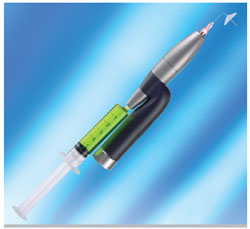 | 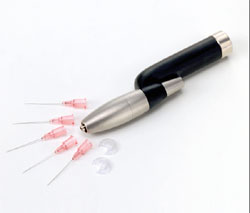 | |
| Figure 1 Rinsendo is designed for endodontists and general dentists who perform endodontic procedures. | Figure 2 The Rinsendo handpiece with disposable cannulas and splash protectors. | |
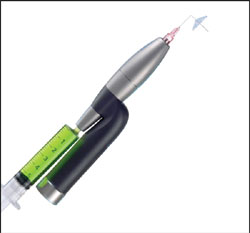 | 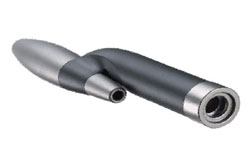 | |
| Figure 3 Rinsendo is prepared for treatment. | Figure 4 Rinsendo fits leading handpiece couplings. | |
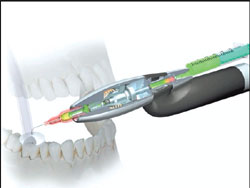 | 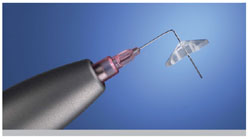 | |
| Figure 5 Rinsendo employs exclusive, patented pressure-suction technology to thoroughly flush the canal. | Figure 6 Special cannula with protector. |



